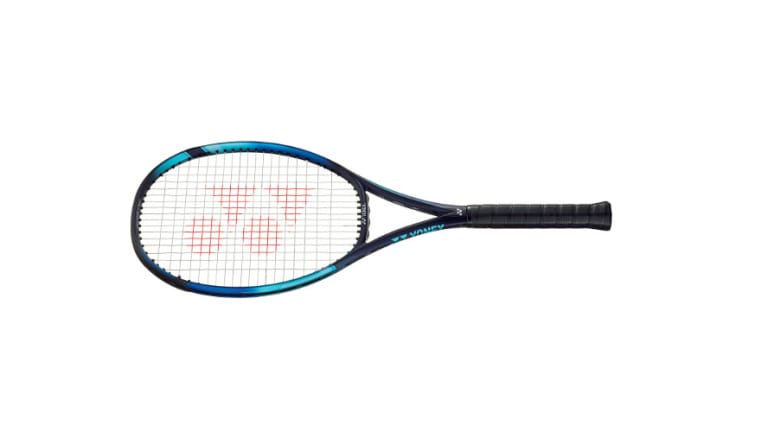Spin generation was somewhat ordinary, but I’ve never found this model to be a monster in that category; certainly not when compared to Yonex’s VCORE franchise. However, if you don’t need much help in that department there’s still enough access to put adequate work on the ball. I preferred bending shots with topspin rather than knifing the ball with slice. It was fine for blocks and chips, but it could use added heft to produce a nastier skidder.
The more I moved inside the court, and the shorter the swings, the less assured I found the results. It wasn’t incapable in these circumstances, just not as instinctive as other 98s. There’s something about the construction of the EZONE that has generally left me wanting on in-between shots. The beam is so thick by the sweet spot and so thin by throat and the extreme variability can leave contact below center feeling squirrely, with vague feedback. It was steady and capable when I drove a chest-high volley with authority, but if the situation called for defending a hot shot and contact was off-center, I lost a degree of trust. Whenever possible I wanted to take a fast, full cut on the ball.
Some of these problems could probably be workshopped with string and tension experimentation or additional weight. If it’s the latter, the next edition of the heavier EZONE 98 Tour due out this summer could be a solution. The extra mass may foster a more predictable response, although raise the overall demands, a tradeoff highly discerning players can consider.
That said, the EZONE 98 continues to bring mass appeal to the courts. The racquet has almost zero learning curve with a playability that, while somewhat baseline-centric, will still suit a wide range of styles and ability levels; from rising juniors looking to transition into more demanding frames, to aging former big-ballers who now need a little more help from their equipment. It’s a racquet that adds a little bit of excess to your game—more pop and forgiveness—without losing the script.
No reason to mess with that.
